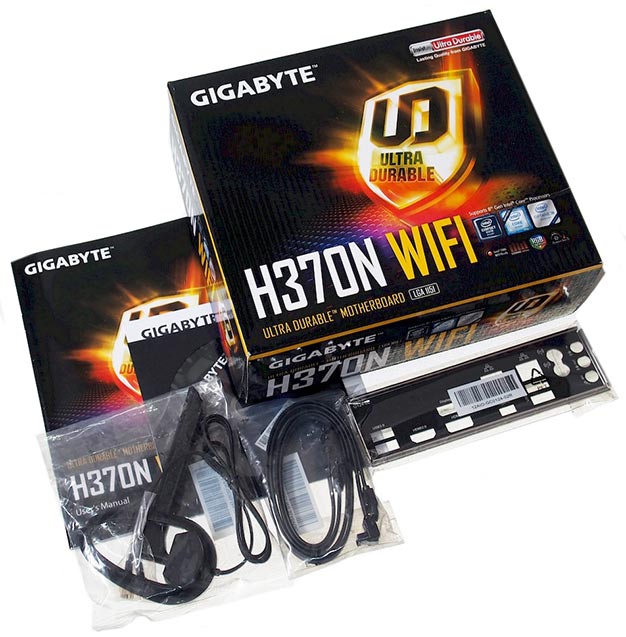Gigabyte H370N WiFi Intel 300 Series Coffee Lake Motherboard Sneak Peek
The new chipsets in the Intel 300 series include the H370, H310, Q370, and B360. As you can see in the table above, the chipsets differ in the maximum number of I/O and PCIe lanes, USB ports, SATA ports, and M.2 pots. Also note that the H310 chipset is the only one of the group to lack support for Optane Memory and Intel Smart Sound.
In anticipation for this launch, we got our hands on a brand new motherboard from Gigabyte, the H370N Wi-Fi. As its name suggest, this board is built around the H370 chipset, but Gigabyte works in a few of its signature touches as well.
The Gigabyte H370N Wi-Fi is a svelte, mini-ITX board, but it is still packing a wealth of integrated goodies including ALC1220VB-based audio with a 120dB SNR from the rear audio outputs (110dB SNR from the front ports), support for RBG LEDs and lighting strips, digital power circuitry, multiple M.2 slots, dual gigabit LAN, 802.11ac Wi-Fi, and all the features offered by Intel's chipset itself.
Although this is a more mainstream, mini-ITX motherboard, the H370N Wi-Fi features a BIOS/UEFI that’s virtually identical to Gigabyte’s full-sized, enthusiast-class motherboards, complete with support for “Smart Fan 5” – the latest iteration of Gigabyte’s fine-grained fan controls that give users the ability to tune their cooling using sensor data from multiple areas around the board. There are 4 temperature sensors in total on the H370N Wi-Fi.
There are an array of overclocking tools available in the H370N Wi-Fi’s BIOS too. Voltages, power limits, and multipliers can be altered for the processor and memory, and profiles can be saved should you want to easily switch between different settings once you’ve got everything dialed in to your liking.
The H370N Wi-Fi also has 3 x hybrid fan pin headers, that can auto-sense what type of fan or device is attached and tune settings accordingly. For example, the headers can differentiate between a water pump and high-speed, PWM fan, and they support up to 3 amps per-header with built-in overcurrent protection.
Although there is no lighting on the H370N Wi-Fi itself, it does have headers to attach RGB LED or light strips, and that lighting can be configured via Gigabyte's “RBG Fusion” app for different modes (pulsing, color cycling, etc. -- 10 modes are offered in total).
The Gigabyte H370N Wi-Fi’s audio comes by way of a Realtek ALC1220-VB codec, with high-end filter caps and isolation circuitry to optimize sound quality. The board is also packing dual Intel Gigabit network controllers, 4 SATA ports (with support for RAID), USB 3.1 with a USB-Type C port, and dual M.2 slots. One M.2 slot is on the top of the PCB, adjacent to the PCIe x16 slot, and another is actually located on the underside.
Include with the H370N Wi-Fi, we found a couple of SATA cables, a custom I/O shield, a user’s manual and installation guide, drivers and utility software, and an external antenna for the built-in Wi-Fi. Not much, but all of the basics are covered.
We’ve got the H370N Wi-Fi on the test bench now and will be putting it through its paces ASAP. Stay tuned for the full review in the days ahead.



